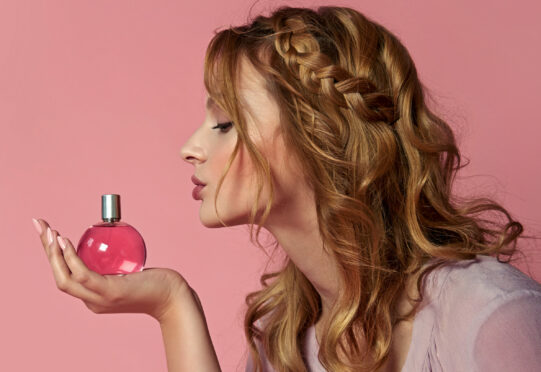
There are many myths and uncertainties surrounding perfume application, including where on the body to spray it, why some fragrances last longer than others, and why the same scent may smell different on someone else.
Here, Iember Gordon, head of marketing at The Fragrance Shop, provides answers to some of the most frequently asked fragrance questions – and explains why you have probably been spraying your scent wrong for many years!
Spritz and settle
“Although an excellent pulse point to spray perfume on, rubbing your wrists together after you spray creates friction and generates heat, which breaks down the fragrance’s delicate notes and makes it develop in a way that was not intended,” says Gordon.
“When you spray a fragrance, the top and middle notes should appear (and disappear) first, while the base notes will last the longest. Don’t damage the fragrance profile by rubbing your wrists together. Just spritz and let it settle.”
Layering is key
When applying perfume, layering is pivotal.
“Fragrance is activated by heat, and different parts of the body warm up at different times, meaning your scent will be regenerated throughout the day,” she explains. “Apply on pulse points: below earlobes, inside elbows, back of knees, ankles, base of neck, inside wrists. Other good places to apply are the chest, shoulders, and back of the neck at the hairline.”
Short is sweet
It’s very easy to get trigger-happy with your favourite fragrance and spray it continuously all over. But one short spritz per pulse point, according to Gordon, is all you need as you don’t want to overpower passers-by.
“Sometimes our fragrance can get lost amongst the other scents that we put on our bodies,” she says. “If you want your scent to stand out, use odourless or fragrance-free deodorants and body products.”
Be cool with scent
The oils in our skin actually help a fragrance last longer – because the oils dissolve and retain scent molecules.
Therefore, the best time to spray perfume is actually straight after coming out of the shower. This is because the moisture gives your scent something to hold on to.
Storage is very important as well. “Heat, light and humidity can all affect your perfume,” says Gordon.
“Your fragrances may look pretty on your vanity or bathroom shelf, but to preserve them, store them in a cool, dark place away from heat and direct sunlight.”

Enjoy the convenience of having The Sunday Post delivered as a digital ePaper straight to your smartphone, tablet or computer.
Subscribe for only £5.49 a month and enjoy all the benefits of the printed paper as a digital replica.
Subscribe